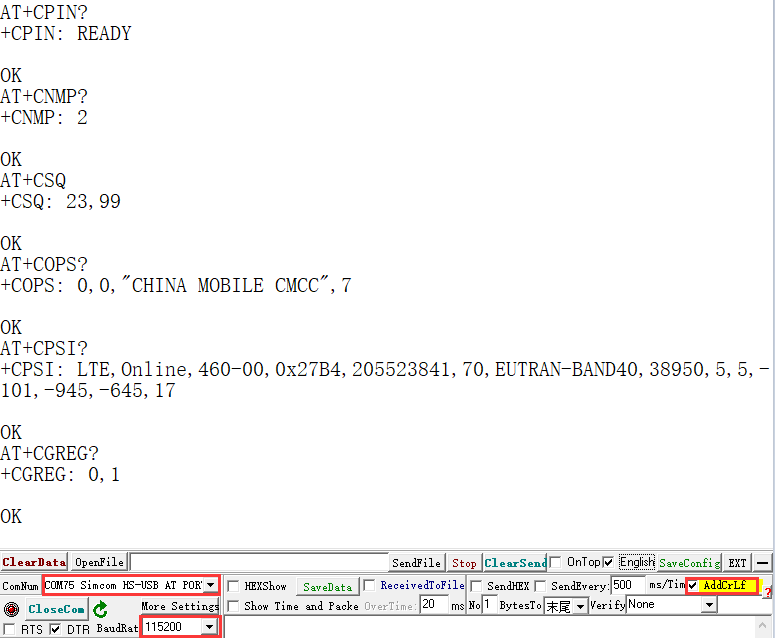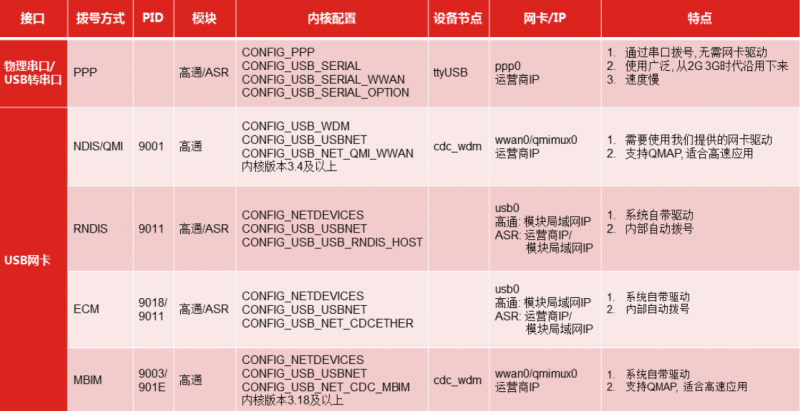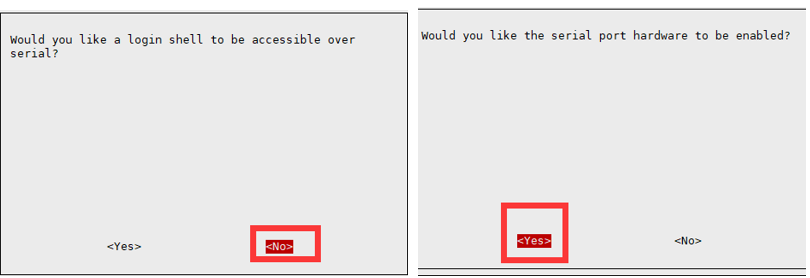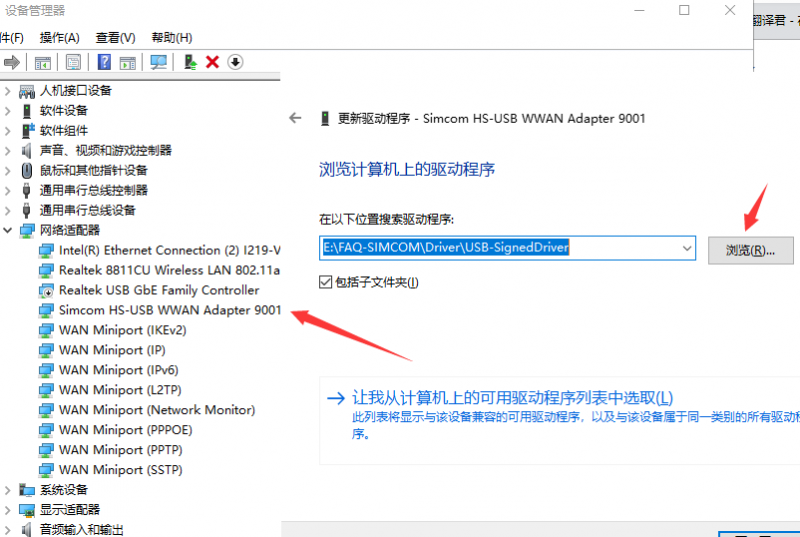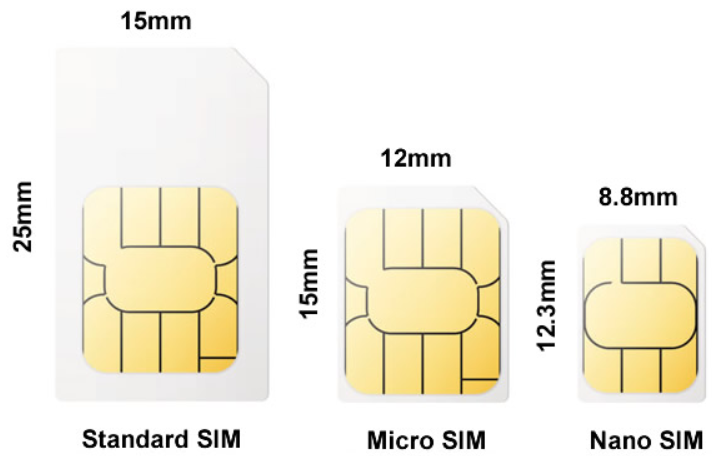SIM7600X-H 4G Module
| ||
| ||
Overview
Feature
- Compatible with 2G/3G/4G network with global support.
- Supports dial-up, telephone calls, SMS, TCP, UDP, MQTT, DTMF, HTTP, FTP, etc.
- Supports GPS, BeiDou, Glonass, GALILEO, QZSS, and LBS base station positioning.
- Onboard USB and UART interface, for dial-up Internet access, cloud platform communication, GNSS positioning, etc.
- Castellated holes with immersion gold design, small size, easy to integrate into the device by soldering directly or inserting via the pin header.
- Adapting USB/UART/SIM card/GPIO control pins, easy to develop and debug, better expansibility.
- Built-in voltage translator, compatible with 3.3V/5V MCU motherboards such as STM32/ESP32/Arduino.
- Supports multiple power supply methods: USB port, VIN pin, and VBAT pin (for 3.7V lithium battery).
- Onboard multiple protection circuits: TVS protection for SIM card, power supply isolation between the USB port and pin header, VIN pin power supply anti-reverse, and so on, more safe and reliable.
- 2x LED indicators, easy to monitor the operating status.
- Adopts SIMCOM recommended power supply solution, supports 5~26V wide voltage power supply and 3A high current output, to prevent the module from dropping and restarting due to the large instantaneous power consumption, more stable and reliable in industrial use.
- Onboard Nano SIM card slot, supports 1.8V and 3V SIM cards, near the edge of the board design, for easy accessing SIM card.
- Comes with online development resources and manual (examples for Raspberry Pi/Jetson Nano/Arduino/STM32).
- Adapting 3-ch antenna connector, IPEX antenna connector version and SMA connector version optional, supports mass customization.
Parameters
Hardware Interface
Quick Test
Hardware Preparation
Material
- USB Type-C Cable
- LTE Antenna
- GPS Antenna
- 4G SIM Card (Not shut down and GPRS enabled)
Hardware Connection
- In the case of power failure, insert the activated 4G SIM card.
- Use the USB Type-C cable to connect the SIM7600G-H 4G Module to the computer.
Software Environment
- Test environment: Windows OS
- Testing software: SIM7600-AT-SSCOM
- Driver file: SIMCOM Windows USB Drivers
Driver Installation
- Download driver: SIMCOM Windows USB Drivers V1.0.2.zip
- Insert the 4G HAT into the Windows computer as shown in the hardware connection diagram above (the Windows 10 operating system is used as an example below).
- Make sure the module is on normally: refer to the last chapter "Module on/off".
- Unzip the driver file --> double-click the exe driver file with the left mouse button --> select the installation path --> NEXT --> wait for the installation to complete --> restart the computer --> complete the driver installation.
5. Install all recognized devices according to the above method, and the driver effect is as follows:
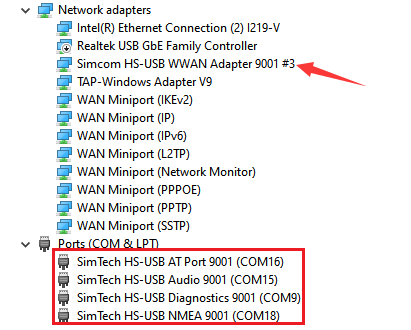
Common AT Command Description
- The SIM7600X module supports AT command control, and some basic AT commands are shown in the following table:
(For the complete AT command set, please refer to SIM7500 SIM7600 Series AT Command Manual)
| Command | Description | Return Value |
|---|---|---|
| AT | AT test command | OK |
| ATE | ATE1 set echo ATE0 disable echo |
OK |
| AT+CGMI | Query module manufacturer | OK |
| AT+CGMM | Query module model | OK |
| AT+CGSN | Query product serial number | OK |
| AT+CSUB | Query module version and chip | OK |
| AT+CGMR | Query firmware version serial number | OK |
| AT+IPREX | Set the module hardware serial port baud rate | +IPREX: OK |
| AT+CRESET | Reset module | OK |
| AT+CSQ | Network signal quality query, return signal value | +CSQ: 17,99 OK |
| AT+CPIN? | Query the status of the SIM card and return READY, indicating that the SIM card can be recognized normally | +CPIN: READY |
| AT+COPS? | Query the current operator, and the information of the operator will be returned after the normal connection | +COPS: OK |
| AT+CREG? | Query network registration status | +CREG: OK |
| AT+CPSI? | Query UE system information | |
| AT+CNMP? | Network mode selection command: 2: Automatic 13: GSM only 38: LTE only 48: Any modes but LTE . .. .... |
OK |
AT Command Sending And Receiving Test
- Download SSCOM: SIM7600-AT-SSCOM
- Open the device manager, find the corresponding port number of AT Port; then open sscom software. choose the corresponding port and baud rate. Check "add carriage return and line feed"; click the sscom "extend" button and pull out the preset AT command; it is best to open the serial port and send the corresponding AT command to test. The screenshot of the test is shown in the figure below:
Dail Up
【Note】: You must use a SIM card that has activated the 4G networking function and has not been shut down.
Usually, when we access the Windows 10 operating system to use, make sure that the hardware and software drivers are installed. After the module is powered on, the PWR light is on normally, the NET light is flashing normally, and it will automatically connect to the Internet. If the Internet cannot be automatically accessed, we can also use NDIS or PPPD to connect to the Internet.
NDIS Dail Up
The operation steps of Windows NDIS dial-up are as follows:
1. Open the SIM7600 AT port and send commands (when using SSCOM to generate AT commands, you must check "add carriage return and line feed").
AT$QCRMCALL=1,1 //must add carriage return

2. At this time, the NDIS dial-up takes effect, and the computer can connect to the network.
PPPD Dail Up
PPPD dialing method, the operation steps are as follows:
GNSS Positioning
GPS Positioning Performance
- Plug in the GPS antenna and place the receiver outdoors (note that the positioning time will increase significantly in rainy weather), and it takes about 1 minute to receive the positioning signal after powering on;
- The AT test command is as follows:
AT+CGPS=1 //Open GPS AT+CGPSINFO //Print the GPS information to the UART port AT+CGPS=0 //Close GPS
After using AT+CGPS=1 to open GPS, you can directly obtain the positioning information in the serial port with NMEA in the serial port name, or you can use AT+CGPSINFO to print out the positioning information on the AT port.
- The screenshot of the SSCOM software test is as follows:
SMS
Sending English SMS
- Correctly install SOM mobile phone card and LITE antenna, the module USB port must be connected to the computer via USB cable, boor the module.
- Observing whether the indicator is normal: PWR indicator always on, NET indicator blinking.
- Set the local SMS center (Unnecessary operation, the SMS center of the phone card is set.): AT+CSCA="+8613800755500" + Enter, return OK.
- AT+CMGF=1: set SMS mode to TEXT;
- AT+CMGS="phone number"<Enter>, set the recipient's phone number, and then return: ">", send the required content, such as "Send message test!", no need to enter at the end, after editing the text message Send 1A to send information in hexadecimal format (1A is the key value of "CTRL+Z", which is used to tell the module to execute the sending operation, and you can also send 1B, which is "ESC" to cancel the operation), after the sending is successful, the module returns + CMGS: 15 Confirmation sent successfully. As shown below.
Receiving English SMS
- Send a message on the mobile phone: "This is a receive test for SIM7600X!" to the test module.
- When the message is received, the serial port will stop reporting the message, "SM", 20, which means there are 20 messages in the SM, and the message just sent is the 20th message.
- Read information: AT+CMGR=20 read the 20th message (AT+CMGL="ALL" means to read all the information).
- Delete information: AT+CMGD=20, as shown below:
- Convert the displayed information into text through a code converter.
Working With Raspberry Pi
Hardware Preparation
TTL Serial Port:
| SIM7600G-H 4G Module | Raspberry Pi |
|---|---|
| VIN | 5V |
| GND | GND |
| TXD | RX |
| RXD | TX |
USB:
- In the case of power failure, insert the activated 4G SIM card.
- Use the USB Type-C cable to connect the SIM7600G-H 4G Module to the Raspberry Pi USB port.
Raspberry Pi UART Debugging
Since the serial port of the Raspberry Pi is used for terminal debugging by default, if you want to use the serial port, you need to modify the settings of the Raspberry Pi. Execute the following command to enter the Raspberry Pi configuration:
sudo raspi-config
Select Interfacing Options -> Serial -> no -> yes to turn off the serial port debugging function.

Open the /boot/config.txt file, find the following configuration statement to enable the serial port, if not, add it at the end of the file:
enable_uart=1
Restart to take effect.
Raspberry Pi Minicom UART Debugging
TTL Serial Port:
1. According to the hardware preparation, use Dupont cable to connect SIM7600G-H 4G Module with Raspberry Pi;
2. Install minicom, which is a serial debugging tool for the Linux platform:
sudo apt-get install minicom
3. Execute minicom -D /dev/ttyS0 (ttyS0 is the serial port of Raspberry Pi 3B/3B+/4B).
The default baud rate is 115200.
For Raspberry Pi 2B/zero, the user serial device number is ttyAMA0, and for Raspberry Pi 3B/3B+/4B, the serial device number is ttyS0.
4. Taking the AT synchronization test as an example, send relevant commands, as shown in the figure below:

* minicom can enter setup mode by pressing Ctrl+A, then pressing Z, and selecting X to exit.
USB:
1. Use the USB Type-C cable to connect the SIM7600G-H 4G Module to the Raspberry Pi USB port.
2. 2Install minicom, minicom is a serial port debugging tool for the Linux platform:
sudo apt-get install minicom
3. Run minicom:
minicom -D /dev/ttyUSB2
The default baud rate is 115200.
4. Take the AT synchronization test as an example, and send relevant commands, as shown in the figure below:

* minicom can enter setup mode by pressing Ctrl+A, then pressing Z, and selecting X to exit.
Raspberry Pi Raspbian Voice Call
To reduce the size of the SIM7600G-H 4G Module, it is not designed with audio input/output interfaces. However, with the Audio port of the USB interface, the SIM7600 chip can input and output the audio data in a binary way when using the voice call function. As the demo adopts the audio interface of the Raspberry Pi and the input function of the USB audio card, it can realize real-time voice calls with data transmission via the USB port.
Hardware Preparation
- Raspberry Pi development board
- SIM7600G-H 4G Module
- USB Type-C data cable
- A SIM card that can normally use for the call service
- External sound card device with microphone (USB sound card is used in this example)
Hardware Connection
- Before powering on, insert the SIM card into the SIM7600G-H 4G Module card slot.
- Connect the SIM7600G-H 4G Module with the Raspberry Pi development board with the USB data cable.
- After waiting for the module booting, connect to the call service, please refer to "NET Indicator Working Status Description".
- Connect the audio card to the Raspberry Pi.
Software Preparation
Enter the running commands to confirm the SIM7600G-H driving status:
ls /dev/ttyUSB*
If it is the newest Raspberry Pi system, it comes with the module driver. You can see there are five ports, from ttyUSB0 to ttyUSB4, and do not need external installation.
Install python function library:
#pyaudio is the module of python, install pyaudio on the Raspberry Pi. Firstly, install portaudio.dev sudo apt-get install portaudio.dev #and then use sudo apt-get install python-pyaudio #or sudo apt-get install python3-pyaudio #python3
Download SIM7600H-G_4G_Module_PhoneCall_code and unzip it.
According to the selected sound card check the sound card driver status. (the USB sound card used in this example is the driver-free one.)
Query the selected audio device number, and you can realize with pyaudio module:
sudo python Audio_check.py
This demo will list all the devices that you can use and the corresponding number. You can record the corresponding number after finding the device according to the name.
Test Process
As the Raspberry Pi system or the audio device is different, you can change some parameters in this demo before running it:
stream_in=p.open(format=p.get_format_from_width(2),channels=1,rate=8000,input=True,input_device_index=1,stream_callback=pcm_out) #This demo is for initializing the audio input object, "input_device_index=1" means the audio input device number, and may be different among different devices.
If it is wrong with the audio input, you can check whether the device runs normally. If the device runs abnormally, you can choose the following loop-test demo:
sudo python Audio_test_R
The demo will play the audio data received by the audio input device on the audio output device, if there is no sound, you can try to refer to the list of audio devices queried in the previous section and modify the "input_device_index" and "output_device_index" parameters in the spy audio initialization object statement.
stream1=p.open(format=p.get_format_from_width(2), channels=1, rate=8000, input=True,input_device_index=1,stream_callback=pcm_in,frames_per_buffer=800) #Parameter: input_device_index stream2=p.open(format=p.get_format_from_width(2), channels=1, rate=8000, output=True,output_device_index=0,stream_callback=pcm_out,frames_per_buffer=800) #Parameter: output_device_index
Raspberry Pi Raspbian Internet Access
- Use the USB Type-C data cable to connect the module to the USB port of the Raspberry Pi, and the module will be turned on;
- Refer to the following operation tutorial for dial-up Internet access (dial-up Internet connection is recommended to use the USB interface, the speed is faster):
PPPD Dail-up
- PPPD Dail-up
- After dialing up the Internet, if the DNS cannot be resolved and the Internet cannot be accessed, you can add the command:
route add -net 0.0.0.0 ppp0
Working With Arduino
Hardware Connection
Hardware connection to development board UNO PLUS/Arduino UNO:
| SIM7600G-H 4G Module | UNO PLUS/Arduino UNO |
|---|---|
| 5V | 5V |
| GND | GND |
| TXD | 0 (RX) |
| RXD | 1 (TX) |
Install Arduino Library
Download and decompress the sample demo, and copy the Waveshare_SIM7600X_Arduino_Library folder to the Library directory under the Arduino IDE installation path.
Open Arduino IDE --> File --> Examples --> Waveshare SIM7600X, and choose to run the corresponding sample demo:

Sample Demo
PHONECALL Demo
SMS Demo
GPS Positioning Demo
TCP Network Communication Demo
FTP Download And Upload Demo
Jetson Nano Demo
Hardware Connection
That Jetson Nano terminal access to the serial port doesn't affect its UART communication with the SIM7600X 4G Module.
| SIM7600X 4G Module | Jetson Nano |
|---|---|
| 5V | 5V |
| GND | GND |
| TXD | 10 (Board code) |
| RXD | 8 (Board code) |
| PWR | 31 (Board code) |
Jetson Nano Minicom UART Debug
- 1. Connect the SIM7600X 4G Module to the Jetson Nano, and the module starts up automatically.
- 2. Log in the Jetson Nano terminal via the serial port, install minicom and enter the following code in the terminal:
sudo apt-get install minicom
- 3. Run the minicom to debug the serial port and enter the following content in the terminal:
sudo minicom -D /dev/ttyTHS1 -b 115200
- 4. Send the AT command to test, hold the PWRKEY for 3 seconds when exits, and then it turns off. Press Ctrl + A before exiting the minicom, press X and ENTER key.
Python Demo
After installing the function library:
sudo apt-get install python3-pip sudo pip3 install pyserial sudo apt-get install p7zip
Download the source code to the specified file of the Jetson Nano with the wget tool, and copy the following commands:
mkdir -p ~/Documents/SIM7600G-H 4G Module wget -P ~/Documents/SIM7600G-H 4G Module/ https://files.waveshare.com/upload/3/36/SIM7600X_4G_Module_code.zip

Enter the directory where you have just created and downloaded the source code, and use the p7zip tool to extract it to the current directory:
cd ~/Documents/SIM7600G-H 4G Module/ sudo p7zip --uncompress SIM7600X_4G_Module_code.zip
AT
Connect the SIM7600G-H 4G Module to the Jetson Nano and install the antenna. Enter the Jetson Nano/AT directory, and execute the following commands:
cd ~/Documents/SIM7600G-H 4G Module/Jetson\ nano/AT/ sudo python3 AT.py
GPS
Connect the SIM7600G-H 4G Module to the Jetson Nano and connect the GNSS antenna. Enter the Jetson Nano/GPS directory, and execute the following commands:
~/Documents/SIM7600G-H 4G Module/Jetson\ nano/GPS/ sudo python3 GPS.py
SMS
Connect the SIM7600G-H 4G Module to the Jetson Nano and connect the main antenna. In this demo, it will automatically turn off after sending the message "www.waveshare.com" to the specified phone number. When users use the SMS demo, they must first change the number in line 10 of the SMS.py file using tools such as nano, replacing * with a number, and keeping the ' symbol. Please click here to see how to use vim.
Go to the Jetson Nano/SMS directory and execute the command:
cd ~/Documents/SIM7600G-H 4G Module/Jetson\ nano/SMS/ sudo python3 SMS.py
TCP
Connect the SIM7600G-H 4G Module to the Jetson Nano, and then connect the main antenna.
Enter the Jetson Nano/TCP directory and execute the following commands:
cd ~/Documents/SIM7600G-H 4G Module/Jetson\ nano/TCP/ sudo python3 TCP.py
ESP32 S3 Demo
Set Up ArduinoIDE Environment
- You can skip this step if you have already configured the environment before.
- 1. Download and install ArduinoIDE.
- 2. Modify the preference settings: File->Preferences->Other Development Board Manager Address, and fill in the address.
https://arduino.esp8266.com/stable/package_esp8266com_index.json https://github.com/espressif/arduino-esp32/releases/download/2.0.6/package_esp32_index.json
As shown below:



3. Download the development board package: Tool -> Development Board -> Manager, search ESP32, and click to install:

4. Boot ArduinoIDE and click the corresponding development board: Tool -> Development Board:

And then choose the development board port at the same position.
Hardware Connection
| SIM7600X 4G Module | ESP32S3 |
|---|---|
| 5V | 5V |
| GND | GND |
| RXD | 1 |
| TXD | 2 |
| PWR | 4 |
Install the Program Library
Download and unzip the sample demo, and copy the Waveshare_SIM7600X_Arduino_Library_ESP32 file folder to the Library directory of the Arduino IDE installation path.
Open Arduino IDE --> File --> Examples --> Waveshare SIM7600X and choose to run the corresponding sample demo:

Sample Demo
Sending/Receiving SMS demo
GPS Positioning Demo
TCP Network Communication Demo
FTP Download and Upload Demo
Raspberry Pi Pico Demo
Set Up Micropython Environment
- 1. Press and hold the Pico development board BOOTSEL button and plug the Pico into the USB port of your Raspberry Pi or another computer. After connecting the Pico, release the BOOT button.
- 2. It will be installed as a mass storage device called RPI-RP2.
- 3. Drag and drop the rp2-pico-20230308-unstable-v1.19.1-939-ga234aa44f.UF2 file from the sample demo file onto the RPI-RP2 volume and the Pico will restart and run MicroPython automatically.
- 4. After that, you can use tools such as thonny to develop on Pico via USB serial.
Hardware Connection
| SIM7600X 4G Module | Raspberry Pi Pico |
|---|---|
| 5V | 5V |
| GND | GND |
| RXD | GP0 |
| TXD | GP1 |
| PWR | GP2 |
Sample Demo
Open the demo with Thonny, select micropython (Raspberry Pi Pico) and the corresponding serial port number in the lower right corner, and run the demo after connecting successfully.

The positioning time is affected by the GPS signal strength, so it is recommended to place the GPS antenna in an open outdoor area.
AT
Connect the SIM7600G-H 4G Module to the Pico, and then connect to the antenna. Run the program AT.py.

GPS
Connect the SIM7600G-H 4G Module to the Jetson Nano, and connect the GNSS antenna. Run the program GPS.py.

The positioning time is affected by the GPS signal strength, so it is recommended to place the GPS antenna in an open outdoor area.
SMS
Connect the SIM7600G-H 4G Module to the Pico, and connect the main antenna. This demo is to send a message "www.waveshare.com" to the specified phone number. To use the SMS demo, the user must first change the number in line 10 of the SMS.py file by replacing the * with a number and keeping the ' character.
Run the SMS.py demo after the modification is complete.

TCP
Connect the SIM7600G-H 4G Module to the Pico, and then connect the main antenna.
Run the demo TCP.py.

Sunrise X3 Pi Demo
Hardware Connection
That the Sunrise X3 Pi terminal accesses the serial port doesn't affect its UART communication with the SIM7600X 4G Module.
| SIM7600X 4G Module | Sunrise X3 Pi (BCM code) |
|---|---|
| 5V | 5V |
| GND | GND |
| RXD | 14 |
| TXD | 15 |
| PWR | 6 |
| FLIGHTMODE | 4. Enter flight mode when pulling up |
Minicom UART Debug
- 1. Connect the SIM7600X 4G Module to Sunrise X3 Pi, and the module automatically boots.
- 2. Install minicom and enter the following content in the terminal:
sudo apt-get install minicom
- 3. Run minicom to debug the serial port, and enter the following codes in the terminal:
sudo minicom -D /dev/ttyS3 -b 115200
- 4. Send the AT command to test, hold PWRKEY for three seconds when exits, and then it turns off. Press Ctrl + A before exiting the minicom, press X, and ENTER.
Python Demo
Install the function library (installed by default).
sudo apt-get install python3-pip sudo pip3 install pyserial sudo apt-get install p7zip
Download the sample demo:
mkdir -p ~/Documents/SIM7600G-H 4G Module wget -P ~/Documents/SIM7600G-H 4G Module/ https://files.waveshare.com/upload/3/36/SIM7600X_4G_Module_code.zip cd ~/Documents/SIM7600G-H 4G Module/ sudo p7zip --uncompress SIM7600X_4G_Module_code.zip
AT
The SIM7600G-H 4G Module is plugged into the Sunrise X3 Pi, the antenna is plugged in, and the module is powered on automatically. Enter the Jetson Nano/AT directory and execute the command:
cd ~/Documents/SIM7600G-H 4G Module/Sunrise_X3\python/AT/ sudo python3 AT.py
GPS
SIM7600G-H 4G Module is connected to Sunrise X3 Pi, connected to GNSS antenna, and the module is powered on automatically. Enter the Jetson Nano/GPS directory and execute the command.
cd ~/Documents/SIM7600G-H 4G Module/Sunrise_X3\python/GPS/ sudo python3 GPS.py
SMS
Connect the SIM7600G-H 4G Module to the Jetson Nano, connect the main antenna, and the module power on automatically. In this demo, it will automatically turn off after sending the message "www.waveshare.com" to the specified phone number. When users use the SMS demo, they must first change the number in line 10 of the SMS.py file using tools such as vim, replacing * with a number, and keeping the ' symbol. Please click here to see how to use vim.
Go to the Jetson Nano/SMS directory and execute the command.
cd ~/Documents/SIM7600G-H 4G Module/Sunrise_X3\python/SMS/ sudo python3 SMS.py
TCP
Connect the SIM7600G-H 4G Module to the Sunrise X3 Pi, connect the main antenna, and the module automatically boots after powering on.
Enter Jetson Nano/TCP directory and execute the commands:
cd ~/Documents/SIM7600G-H 4G Module/Sunrise_X3\python/TCP/ sudo python3 TCP.py
Resource
Demo
Software
- SIM7600 driver
- CP2102 driver
- SIM7600-AT-SSCOM
- GPS Debug Tool
- TCP-Test Tool
- Xshell
- VLC-media-player
- Unicode software
Datasheet
Documentation
FAQ
Dail-up Internet Access
In this case, it may be that you have not successfully connected to the network. You can follow the steps below to troubleshoot:
1. First check the hardware connection:
- Check if the MAIN antenna is connected properly;
- Whether the connected SIM card can make normal calls and surf the Internet on mobile phones and other devices:
- If connected to the Raspberry Pi, whether the module enters the flight mode;
2. After confirming that there is no problem with the hardware, the software can use these instructions:
- Check if the SIM card is in good contact: AT+CPIN?
- Check whether the RF is turned on (turn off the flight mode): AT+CFUN?
- Check whether the network mode setting is correct: AT+CNMP?
- Check the signal quality of the current environment: AT+CSQ
- Check operator access status: AT+COPS?
- Check the network status: AT+CPSI?
- Check whether it is successfully registered to the network: AT+CGREG?
- Check whether the APN is configured or not: AT+CGDCONT?
- Check the firmware version: AT+SIMCOMATI
{{{5}}}
{{{5}}}
ATE1
{{{5}}}
It may be that the APN has not been obtained. Generally, the APN can be obtained automatically. In some regions (IoT cards), it needs to be obtained manually. For example, it can be set by the following command:
AT+CGDCONT=1,"IP","APN" //The APN of different operators is different, here the APN is changed to the corresponding operator
You can check the APNs of major operators on the following websites: APN Website

{{{5}}}
It can be set by the following command:
AT+CGDCONT=1,"IPV6","APN" //Switch to IPV6, the APN of different operators is different, pay attention to distinguish the settings AT+CGDCONT=1,"IP","APN" //Switch back to IPV4
{{{5}}}
- Generally, the SIM7600X has already dialed automatically after receiving the Windows system, there is no need to repeat the dial, and the repeated dial will return NO CARRIER.
- If you still fail to access the Internet, please use the following commands to change the Windows default dial-up Internet access.
AT+CUSBPIDSWITCH=9001,1,1
- You can directly connect to the Internet and can ignore the display is closed and the mobile network is not enabled.
- Or you can install SIM7600X dial-up Driver.zip to update the network card.
- After installing the driver, the network display is enabled.
{{{5}}}
- Generally, the default configuration of SIM7600 is to automatically select the network standard, and it is likely to choose 2G Internet access; if you need to force the use of 4G mode, you need to enter the following AT command configuration:
AT+CNMP=38 //Fixed 4G LTE, if there is no 4G coverage in the local area, it may not be able to register to the network
- If 4G has been fixed, but the speed is still not ideal, it may be a frequency band problem;
AT+CNBP? //Back up the current frequency band (the returned frequency band information can be copied to Notepad, etc.)
AT+CNBP=0x0002000000400183,0x000001E000000000,0x0000000000000021 //After returning OK, measure the speed
AT+CNBP=0x0002000004400180,0x000001E000000000,0x000000000000003F //If the speed does not improve, try this
{{{5}}}
{{{5}}}
Positioning Command
{{{5}}}
GNSS parameter problem, after restarting the module, initialize the GNSS parameters with the following command;
AT+CGPSNMEA=197119
Or you can use the following commands to obtain the location information:
AT+CGPSINFOCFG=10,31
{{{5}}}
- After turning the GPS on the AT debugging serial port, open the NMEA port to obtain dynamic information:

For more details, please refer to the following links:
The longitude and latitude obtained by SIM7600X are in cents, and we usually use degrees as the unit. For more details, please see the following:
{{{5}}}
Common commands for the LBS base station positioning function of SIM7600X are as follows:
AT+CLBS=? //View the range of parameters that can be set AT+CNETSTART//Open the network; if it fails to open the network, you can use the command AT+CNETSTOP to close and then open AT+CLBS=1 //Get the current latitude and longitude AT+CLBS=2 //Get a detailed address
{{{5}}}
Telephone Call & SMS
The VOLTE function can be turned on with the following command:
at+voltesetting=1 at+cnv=/nv/item_files/modem/mmode/ue_usage_setting,1,01,1
The VOLTE function can be turned off with the following command:
at+voltesetting=0 at+cnv=/nv/item_files/modem/mmode/ue_usage_setting,0,01,1
{{{5}}}
SIM7600X makes a call and the phone answers it ATD131xxxxx816; Record the sound of SIM7600 and mobile phone to the E disk of the module memory (record to the memory card and change it to D) AT+CREC=3,"e:/rec.wav" end recording AT+CREC=0 Play the sound to the mobile phone AT+CCMXPLAYWAV="E:/rec.wav",1 Play sound to SIM7600 AT+CCMXPLAYWAV="E:/rec.wav",2 end play AT+CCMXSTOPWAV
{{{5}}}
{{{5}}}
AT+CSCA="+8613800755500"
The command should be added + Enter, return OK.
{{{5}}}
- Confirm that the SIM7600X is registered to the network, and confirm that the SIM card can send and receive text messages normally on mobile phones and other devices;
- Set the correct SMS center number;
- Initialize the SMS settings with the following command:
AT+CSCS="IRA" AT+CSMP=17,167,0,0
{{{5}}}
Hardware Questions
{{{5}}}
- Confirm whether the frequency band supported by the IoT card covers the frequency band supported by the module.
- APN is not set, configure APN as described above.
- It has been blocked, and the large-traffic (real-name Internet of Things) cards are bound to the machine card and can only be used on one device (the Ministry of Industry and Information Technology, the Ministry of Public Security, must be issued to operators); it can allow the Internet of Things card to operate The merchant checks the status of the card and unlocks it.
{{{5}}}
{{{5}}}
{{{5}}}
- Frequency: 700m 800m 900m 1710-1920M 2010-2100M 2300-2400M 2500-2690M-5800MHZ
- Gain: 9dbi± 0.7dbi
{{{5}}}
System Firmware
- Make sure your system kernel is above 5.4. Do not use sudo update to upgrade the Raspberry Pi to the latest version. This will upgrade the kernel version to a version higher than the current firmware and it will not be recognized.
- It is recommended to use the more convenient RNDIS dial.
- Can burn the latest Raspberry Pi Raspbian system and reconfigure NDIS dial-up.
- Or use the image that has been configured with the driver. NDIS dial-up and start automatically. Raspbian system image (with the driver installed).
{{{5}}}
The new driver may not be compatible with some WIN7 systems, you can try with the old driver:
- SIM7600-Driver.7z
- SIM7600X-Driver.7z
- Follow the steps below to install the driver:
1. Download the driver: SIM7600X-Driver.7z.
2. Insert the 4G HAT into the Windows computer as shown in the hardware connection diagram above (the Windows 10 operating system is used as an example below).
3. Make sure the module is turned on normally: refer to the previous chapter "Module Power On and Off".
4. Open the device manager—>Other devices—>"SimTech, Incorporated"—>Update driver—>Browse my computer to find the driver file— >According to the system, select the path where the driver files are stored—>installation is complete.
4. Install all recognized devices according to the above method, and the driver effect is as follows:

{{{5}}}
{{{5}}}
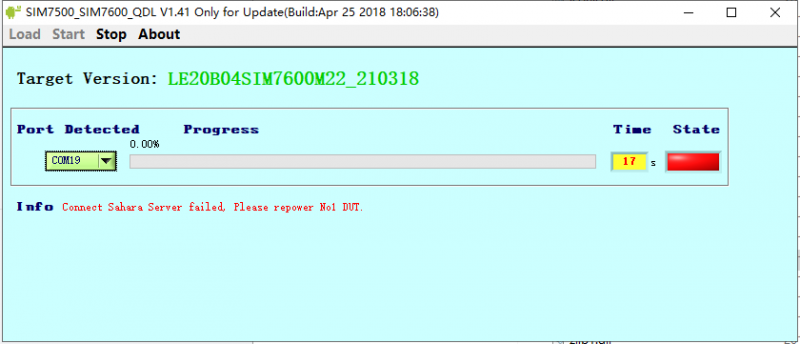
1. Pay attention to checking the device manager. During the upgrade process, you will be prompted to insert a new device, and there will be no device driver for the first upgrade;
2. Pay attention to the USB cable. During the upgrade process, the USB cable has a high rate, so you need to choose a better quality USB cable to avoid poor contact.
3. Need to run the upgrade tool with administrator privileges (SIM7500_SIM7600_QDL V1.41 only for Update)
4. Uninstall and reinstall the upgrade tool (SIM7500_SIM7600_QDL V1.41 only for Update)
5. For more operation details, please refer to this video: http://www.waveshare.net/wiki/SIM7600-Firmware-upgrade-Video
{{{5}}}
Demo
Question:When executing the chmod 777 sim7600_4G_hat_init command, an error is reported: "chmod: cannot access 'sim7600_4G_hat_init': there is no such file or directory, how to deal with it?


in the current path. The general operation is: download the sample program, after decompression, rename the c folder under the Raspberry folder to SIM7600X, and then copy the entire SIM7600X folder to the Raspberry Pi /home/pi directory , enter the /home/pi/SIM7600X directory from the command line, and then execute the chmod 777 sim7600_4G_hat_init command.
{{{5}}}
Support
Technical Support
If you need technical support or have any feedback/review, please click the Submit Now button to submit a ticket, Our support team will check and reply to you within 1 to 2 working days. Please be patient as we make every effort to help you to resolve the issue.
Working Time: 9 AM - 6 PM GMT+8 (Monday to Friday)





































